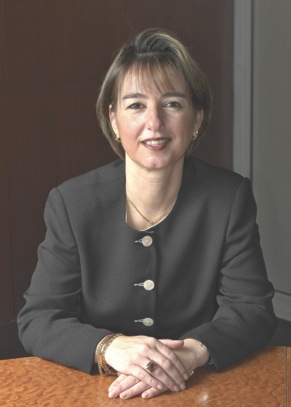Moretti, who was named president of Delphi Product & Service Solutions in mid-2011, began her automotive career at a Delphi Joint Venture in Brazil (DHB) in 1989. She held several positions in sales, marketing and business planning in the original equipment business and then joined Delphi Product & Service Solutions in 2001 as director of aftermarket, South America. In this role, Moretti led the creation of the DPSS business and launch of the new brand. She moved to DPSS headquarters in Troy, Mich., in 2003 to become director of marketing for DPSS. In this role she helped create Delphi’s global processes and portfolio for the independent aftermarket. In 2005, she moved to Europe and was promoted to vice president, independent aftermarket, Europe, Middle East and Africa. During this time, she successfully led a restructuring and turnaround effort for DPSS IAM Europe. Educated in Brazil, Moretti holds a bachelor’s degree in liberal arts, a master’s degree in human resources and an MBA in marketing. Moretti is fluent in multiple languages, including Portuguese, English, French and Spanish. 
In this Executive Interview, Moretti talks about settling in to her new role as president of DPSS, as well as her goals and priorities for the future of the division.
You became President of Delphi Product & Service Solutions as of last August (2011). Now that you’ve settled in to your new role, how is everything going?
Wonderful. I’ve been with Delphi almost 22 years with experience in South America, North America and Europe, Middle East & Africa. Frank Ordoñez had mentored me for many years in those roles, and after I came back to the U.S. to run the global independent aftermarket last Spring, Frank elected to retire. I was proud to be appointed to his position and become responsible for the entire business as president. I consider myself very fortunate and so far, it has been wonderful. I cannot be happier to be in this leading position with Delphi, particularly at a time when Delphi is doing well. Specific to North America, I continue to learn from this market and am impressed with its dynamics.
You are humble to say you are still learning. I would imagine you have a very thorough understanding of this market and of Delphi after 22 years.
I believe you are always learning. You can learn the basics or details of the aftermarket, but wherever you travel there are always regional nuances, things that are very local. When I say learning, it’s those regional differences that keep me learning every day.
As you said, the North American aftermarket is very different from the aftermarket in Brazil or Europe. What advantages do you feel your global background will provide in your approach to the North American market?
I believe you start to understand the benefit of being a global company. As you manage globally, you see the diverse car parc we supply parts for, but interestingly, the more global you become, the more you start to see the world become small. For example, you speak with customers on the West Coast in the U.S. and think we could possibly offer parts we have in Europe for the import car parc in the U.S. You begin seeing opportunities and how you can interchange with the different regions.
Another thing I’ve learned is there is no single business model. As you visit developing countries in Eastern Europe, South America or even Asia Pacific, you see different business models. They will continue to evolve as their markets mature. In the U.S., I see an advanced business model compared to other regions in the world. It’s an interesting process and position to be in after having the opportunity to lead three of the four regions of the world. It’s almost like a gift.
You mentioned previously that Mr. Ordoñez was a mentor to you and that he often preached the “Safe, Green and Connected” mantra for Delphi. What are your goals going forward – will you continue to focus on the “Safe, Green Connected” message?
“Safe, Green and Connected” are megatrends that drive Delphi’s technology development. These technologies are becoming more and more connected. Frank used to talk a lot about the vehicle electronics revolution. We cannot be in the aftermarket today without talking about vehicle electronics. It’s not something that might happen; it is here. In the 1980s, we had 15 percent vehicle electronic content; in the 90s, 20 percent. Today, we have 40 percent. In 2040, we will be in the 60 percent range for electronic content in vehicles. As it continues to enter the independent aftermarket, our role is to continue to develop the products and provide solutions professional technicians can use to work on these vehicles.
Frank taught us a lot and made us think strategically about the aftermarket with an eye on today and tomorrow. From him, we developed products, diagnostic tools and training to address the vehicle electronics reality. Today, we continue to implement that strategy. Nothing has dramatically changed except we have accelerated the pace in which we provide those aftermarket solutions to the professional technicians.
Please tell us more about the pilot telematics program that Delphi has launched with warehouse distributors.
We have a new telematics device, which we launched at AAPEX in November 2011. It has more processing power and gathers twice the data from the vehicle than the original. With today’s modern vehicles and the sensing technology, we know tire pressure, fluid levels, the age of the oil – or oil life monitoring – there is a lot of information we can pull from the vehicle. Telematics is an excellent solution to managing preventative maintenance on a vehicle. As this model is introduced to the market and evolves, I think it will be seen by shops as a growth opportunity that will help them take some of the $62 billion of lost opportunity in unperformed maintenance.
Telematics not only helps improve vehicle performance and safety, but also can [also] contribute in driving the parts business. For the vehicle owner, it helps provide peace of mind. For example, if their car breaks down, our telematics device can instantly read from the vehicle data what’s wrong and determine how to fix it. In many cases, we can get in touch with the customer and let them know if it’s ok to drive the vehicle or if it should be towed. We can pinpoint their exact location and, if needed, disable the vehicle. We can communicate if they need to bring the vehicle in immediately or with their next scheduled maintenance.
You can also employ our telematics business model for fleet management. Many of our customers have thousands of vehicles delivering parts every day. It’s an enormous expense in terms of fuel and vehicle maintenance. We can bring a level of sophistication and planning that will help make them more efficient.
Currently, we are talking to distributors about this opportunity. The goal of our telematics business model is to link the professional installer and garage with the distribution aftermarket. This model creates value and movement. That is what we are trying to make happen. Our role with the company is to provide our customers with solutions, and telematics is one of them.














